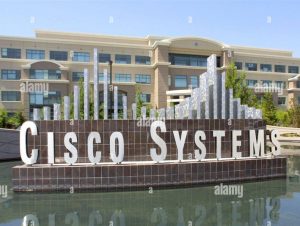WAN Transport Technologies – WAN for the Enterprise
3 min read
Several factors should be considered when selecting a WAN transport technology. Some WAN options are public Internet based, and some are private WAN based. Geography also plays a key role in what WAN technologies are available in a given area. Major cities have the most WAN transport options, and rural areas are more limited as to the availability of WAN service options.
Table 8-2 lists some WAN technologies and highlights some common factors used to make WAN technology selections. The information in this table reflects the different characteristics of each WAN technology. However, keep in mind that your service provider offerings limit the WAN technology choices available to you.
Table 8-2 WAN Comparison
| WAN Technology | Bandwidth | Reliability | Latency | Cost |
| Layer 2 VPN | High | High | Low | High |
| 4G/5G | Low/medium | Low | Medium | Medium |
| Metro Ethernet | Medium/high | High | Low | Medium |
| MPLS Layer 3 VPN | High | High | Low | High |
| SD-WAN with two transports (Internet/MPLS) | Medium/high | Medium | Medium | Medium/high |
| DWDM | High | High | Low | High |
The following sections offer more details about the WAN technologies covered in Table 8-2.
Layer 2 VPN
Service provider VPN offerings typically include Layer 2 or Layer 3 connectivity options. Layer 2 VPNs are more expensive than Layer 3 VPNs, but they serve a couple of important use cases. Layer 2 VPNs are useful for application requirements that need Layer 2 adjacencies between sites or direct routing between edge routers at multiple locations. Layer 3 options, on the other hand, are lower cost and more scalable than Layer 2 options; however, the customer routers need to exchange routes with provider edge routers at each site.
Layer 2 VPN service can connect your HQ with one or more of your branches at Layer 2 across the SP backbone network. Layer 2 VPN services allow for attached routers at each site to connect using the same IP subnet. Interior gateway protocol (IGP) routing protocols such as Open Shortest Path First (OSPF) and Enhanced Interior Gateway Routing Protocol (EIGRP) can then establish neighbor adjacencies and exchange routes directly. This capability is useful if the business wants to manage the routing in-house instead of having the provider manage it. Layer 2 VPN provider options include Virtual Private LAN Service (VPLS) and Virtual Private Wire Service (VPWS), discussed later in this chapter.
MPLS Layer 3 VPN
Multiprotocol Label Switching (MPLS) is a technology for the delivery of IP services using labels (numbers) to forward packets. In normal routed environments, packets are forwarded hop by hop from the source to the destination. Each router in the path performs a Layer 3 destination address lookup, rewrites the Layer 2 address, and forwards the packet to the destination. However, MPLS functions by marking packet headers that include label information. As soon as a packet is marked with a label, specific paths through the network can be designed to correspond to that distinct label and provide forwarding. MPLS labels can be set on parameters such as source addresses, Layer 2 circuit IDs, or QoS values. Packets that are destined to the same endpoint with the same requirements can be forwarded based on the labels, without a routing decision at every hop. Typically, the labels correspond to the Layer 3 destination address, which makes MPLS very similar to destination-based routing.
MPLS labels can also be used to implement traffic engineering by overriding the routing tables with specific paths through the network. MPLS packets can run over most Layer 2 technologies, such as ATM, Packet over SONET (POS), and Metro Ethernet. The goal of MPLS is to maximize switching using labels and minimize Layer 3 routing.
In MPLS implementations, there are customer edge (CE) routers, provider edge (PE) routers, and provider (P) routers. A CE router resides at the customer premises, and that is typically where internal and external routing information is exchanged. A CE router connects to a PE router, which is the ingress to the MPLS service provider network. PE routers connect to P routers in the core of the service provider network. To exit the MPLS network, the process is reversed, with the last router being the CE router at the other customer premises.
Figure 8-3 shows end-to-end MPLS WAN connectivity with CE, PE, and P routers.

Figure 8-3 MPLS




